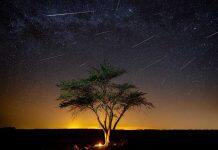Theoretical astrophysicist and current recipient of the Jim Buckee Fellowship in Astrophysics at The University of Western Australia, Dr Adam Stevens, has won an Astronomical Society of Australia (ASA) prize for his state-of-the-art computer modelling of galaxies, which helps predict what telescopes might see in the actual sky.
Dr Stevens, who works at the International Centre for Radio Astronomy Research (ICRAR) on problems relating to galaxy evolution, was awarded the ASA’s Louise Webster Prize 2022 for outstanding research by a scientist in their early postdoctoral career.


He uses simulations of the Universe to study the formation of galaxies, and models how these might be observed by scientists with telescopes, allowing for fair comparison to real data, ultimately testing the underlying theory that goes into the simulations.
The Research Fellow said he was thrilled to win the prize for his postdoctoral research, which was one of the most cited physics and astronomy papers in 2019, the year it was published.
“The specific science my research was trying to address was how the gas in some galaxies is affected by neighbouring galaxies, some which are isolated and some in clusters, and what happens when those galaxies begin to interact,” Dr Stevens said.
“I used an existing detailed simulation and added extra modelling on top of that so that we were able to ‘mock observe’ each of the galaxies in the same way that scientists using a radio telescope would be able to do, with the benefit of some additional intricacies and detail.”
The New Zealand-born astrophysicist, who studied at the University of Canterbury in Christchurch before completing his PhD jointly at Melbourne’s Swinburne University of Technology and the University of Cambridge in the UK, has held his postdoctoral position at UWA since 2017.
“It was a close call when I was young, I was always fascinated by space but really enjoyed acting as well – which is helpful now when I need to get up in front of a room and make a presentation,” he said.
“What I love about the choice I made is that I learn something new about the Universe nearly every day. There is so much that we have the ability to explore.”
When he’s not building computer simulations or theorising about far-off galaxies, Dr Stevens, 31, said he enjoyed being under the stars in the great outdoors and swimming, biking, hiking and playing soccer.
UWA Senior Principal Research Fellow at ICRAR Professor Chris Power said Dr Stevens’ work was “vitally important to interpret observations from next generation radio telescopes, such as the Square Kilometre Array, while at the same time providing stringent tests of our theories of how galaxies form”.
“Dr Stevens’ approach is a novel one and has benefitted from the unique melting pot of expertise at UWA and ICRAR, bringing together radio astronomers and theoretical astrophysicists,” Professor Power said.







































